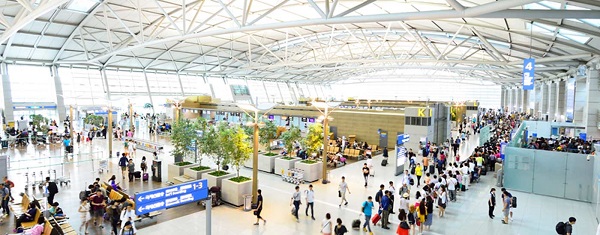Being an aviation industry insider, whenever I have the opportunity to fly, I find myself looking around the cabin to try to get an idea of how full it is. For any airline, the clear objective is to fill all the seats at the highest possible prices.
However, even if all the seats on the flight are full, there are still a few lingering, head-scratching questions in my mind: “Would it be possible to generate more revenue with a few empty seats and higher ticket prices?” or “Why didn’t the airline reserve seats for a potential sale at a higher fare code earlier?” For many airlines – even network carriers making heavy investments in revenue management systems to maximize revenues – it is very difficult to answer these questions.
Generally speaking, there’s no point in filling flights with seats at rock-bottom prices, or having nearly empty flights with sky-high ticket prices. In order to maximize revenues, airlines must be able to execute revenue management strategies (like overbooking, origin and destination control, or discount allocation based on time to flight) to attain a perfect yield and load factor balance.
Why do airlines need to achieve a perfect yield and load factor balance?
It is imperative for airlines (in order to reach and remain at peak levels of profitability) is to balance yield and load factor – and thereby optimize the utilization of their most expensive assets: their fleet of aircraft.
Of course, airlines must make a huge investment to purchase and maintain a fleet of aircraft, and many players find themselves in the red because of their inability to get the most out of these costly assets.
Indeed, the aviation industry is asset- and capital-intensive, and the financial fortunes of airlines rests – in large part – on their ability to optimally utilize their aircraft.
Additionally – beyond their capital expenditure for their fleet of aircraft – airlines must also minimize their ongoing operational expenditure. Controlling operational costs is a colossal challenge for airlines.
To attain and maintain profitability in the face of major capital outlays and surging operational costs, airlines must be able to efficiently utilize their assets and allocate their capacity.
Perhaps more than any other metric, the yield and load factor balance is an accurate indicator of how efficiently airlines are using these very valuable assets and resources. And even a 1% swing in terms of the yield or load factor can have a huge impact in terms of an airline’s bottom line.
Why is attaining a perfect yield and load factor balance such an immense challenge?
Actually being able to foster and sustain a high yield, high load factor balance is an immense challenge for airlines due to the complex, competitive, and dynamic nature of the aviation industry. In everyday airline operations, everything is constantly changing due to fluctuations in supply and demand as well as delays and disruptions.
Additional challenges include determining expected demand magnitude, ensuring forecast accuracy, and calculating the probability of selling tickets at a higher fare class. Existing revenue management systems already address all of these challenges to maximize overall revenue. Indeed, there are many developed solution approaches (for those carriers facing realized reservations lower than expected demand during a particular sales period) like changing nested fare class limits, new discount policies, or special campaigns to achieve the expected load factor. However, yield management should be perceived as a fine-tuning discipline for the flights, which realize greater revenue than forecasted as they have received more demand than expected. Effort then should be concentrated on certain flights that have reached target reservations earlier in the sales cycle than expected, which would probably lead to lost revenue opportunities.
In order to reach an optimal yield and load factor balance, airlines must be able to dynamically adjust not only their prices, but also reallocate their capacity (including aircraft type, cabin configuration, crew, and other resources), and spill realized reservations to flights with lower load factors based on real-time data.
Achieving this, however, is no easy task – as it requires an automated, integrated planning and decision-making optimization capability. Planning methods on isolated network and scheduling systems without data gathered by revenue management systems and analysis on customer reservation data are simply not capable of handling the complexity and dynamism of daily aviation operations and profitably balancing yield and load factor.
The key to solving the yield and load factor challenge
With an automated, integrated software platform, the various divisions and departments across airline operations – from aircraft scheduling and routing to crew management – can collaborate to make real-time, data-driven plans and decisions that ensure a high yield, high load factor balance by optimizing network capacity utilization and efficiency, on-time performance, and profitability.
Such a platform will serve as collaborative decision-making mechanism through which all key stakeholders across each airline’s end-to-end operational network can work together to instantly generate and dynamically revise strategic, tactical, and operational plans that drive improved asset and resource utilization and performance and maximize high yield, high load factor outcomes. This is thanks to continuous optimization across numerous areas including aircraft rotations, aircraft type change and tail assignment, cabin configuration to optimize capacity until flight departure time for revised demand forecasts. In addition to capacity optimization, generating realized demand based on reservation analytics helps to increase the load factor of less popular flights and to push higher yield across the overall network.
With an intelligent, integrated software platform in place, airlines can ensure a high yield and high load factor balance (and greater profitability) by enabling ongoing, collaborative planning and decision making across the following areas:
-Aircraft utilization and scheduling
-Disruption management
-Crew management
-Maintenance and ground operations
For airlines, collaboration across these areas is the key to solving the yield and load factor challenge and maximizing asset utilization and profitability.
If you would like to see easie in action, please contact us. If you have enjoyed this blog, you can find more content that you might enjoy here.











